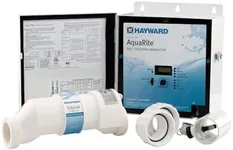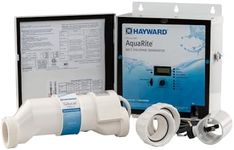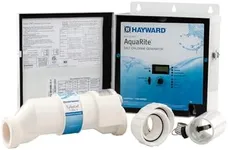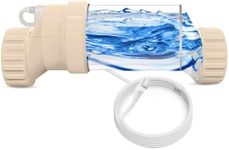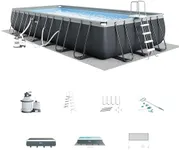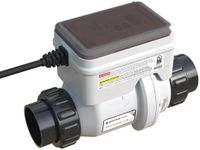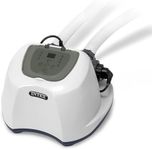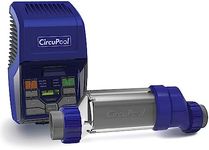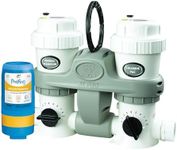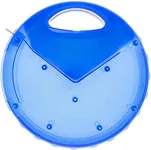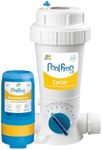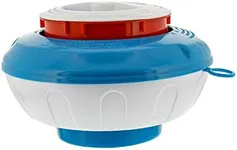Buying Guide for the Best Salt Water Pool Systems
Choosing the right salt-water pool system can significantly enhance your swimming experience by providing a more comfortable and low-maintenance pool environment. Salt-water pool systems use salt to generate chlorine, which helps keep your pool clean and safe. When selecting a system, it's important to consider several key specifications to ensure you get the best fit for your needs. Understanding these specs will help you make an informed decision and enjoy the benefits of a salt-water pool system.Pool Size CompatibilityPool size compatibility refers to the maximum pool size that the salt-water system can effectively handle. This is important because a system that is too small for your pool will not be able to generate enough chlorine to keep the water clean, while an oversized system may be unnecessarily expensive. Pool size compatibility is usually measured in gallons. For small pools (up to 15,000 gallons), a smaller system will suffice. Medium-sized pools (15,000 to 25,000 gallons) require a mid-range system, and large pools (over 25,000 gallons) need a high-capacity system. To pick the right one, measure your pool's volume and choose a system that matches or slightly exceeds this capacity.
Chlorine OutputChlorine output indicates the amount of chlorine the system can produce, usually measured in pounds per day. This is crucial because it determines how effectively the system can sanitize your pool. Low-output systems (up to 1 pound per day) are suitable for smaller pools or those with lower usage. Medium-output systems (1 to 2 pounds per day) are ideal for average-sized pools with moderate usage. High-output systems (over 2 pounds per day) are best for large pools or those with heavy usage. Consider your pool size, usage frequency, and local climate when choosing the appropriate chlorine output.
Salt Level RangeThe salt level range specifies the concentration of salt required for the system to operate efficiently, typically measured in parts per million (ppm). This is important because maintaining the correct salt level ensures optimal chlorine production and prevents damage to the system. Most systems operate within a range of 2,500 to 4,000 ppm. Lower ranges (2,500 to 3,000 ppm) are gentler on pool equipment and swimmers' skin, while higher ranges (3,000 to 4,000 ppm) may provide more robust chlorine production. Choose a system with a salt level range that matches your maintenance preferences and pool usage.
Control FeaturesControl features refer to the system's ability to adjust and monitor chlorine production, salt levels, and other parameters. These features are important for maintaining water quality and simplifying pool maintenance. Basic systems may have manual controls and simple displays, suitable for users who prefer hands-on management. Advanced systems offer digital controls, automatic monitoring, and even smartphone connectivity, ideal for those who want convenience and precise control. Consider your comfort level with technology and how much time you want to spend managing your pool when selecting control features.
Cell LifespanThe cell lifespan indicates how long the salt cell, which is responsible for generating chlorine, will last before needing replacement. This is important because it affects the long-term cost and maintenance of the system. Cell lifespan is typically measured in hours of operation or years. Shorter lifespans (3 to 5 years) may be more affordable initially but require more frequent replacements. Longer lifespans (5 to 7 years or more) offer better value over time. Consider how often you are willing to replace the cell and the overall cost of ownership when choosing a system with the appropriate cell lifespan.
